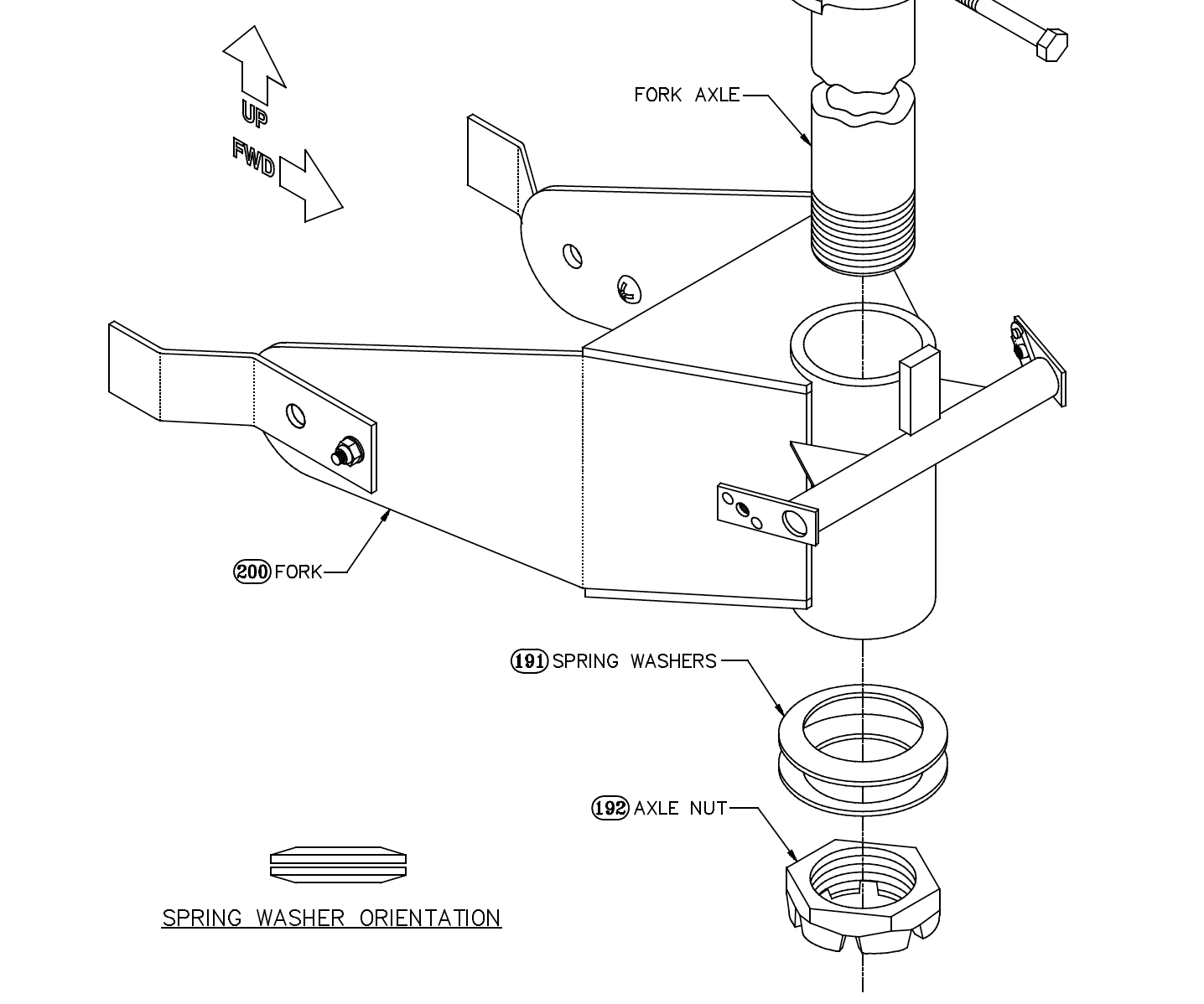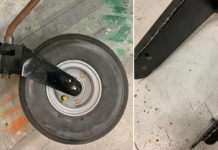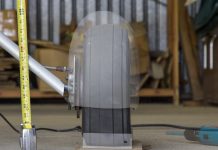 You have to go no farther than the local grocery market to find out how easily castering wheels shimmy (a Cessna will also do). Shopping carts would be harder to push if they could not also shimmy so the problem may never be fixed, but for airplanes, castering nosewheel shimmy is such a expensive and critical problem that some thorough analyses actually exist.
You have to go no farther than the local grocery market to find out how easily castering wheels shimmy (a Cessna will also do). Shopping carts would be harder to push if they could not also shimmy so the problem may never be fixed, but for airplanes, castering nosewheel shimmy is such a expensive and critical problem that some thorough analyses actually exist.
Mechanics sometimes mistakenly blame this on loose and worn parts. But the real reasons are well understood.
The maximum spindle friction (ft-lb of torque) of the nosewheel caster spindle to reliably prevent shimmy is given by calculation as:
T = 0.17 U x R x W
Where:
U = Approx. coefficient of friction of the tire to concrete = 0.55 (dimensionless)
R = Distance from the wheel axle to the spindle, 7.5″ = 0.62′
W = Weight on the tire, typically 350 lb., or so for nose wheels
So, T = 0.17 x 0.55 x 0.62 x 350 = 20 ft-lb.
This is the required static friction (torque) on the spindle assembly to prevent nosewheel shimmy. (Note: The torque on the spindle nut is irrelevant!) The GlaStar assembly manual, page 252 says that a spring scale on the end of the assembly should read 10-15 pounds. Since this is a lever arm of 0.7 feet, the static torque (spindle friction) would be about 7-11 foot-pounds. A bit lower than NACA suggests so be advised—at the first sign of shimmy try a higher torque value.
Critical stuff: Now, you might guess that shimmy can be cured by the same technique as anti-flutter damping used on control surfaces; but you would be very wrong. In anti-flutter damping, the addition of weights lowers the resonant frequency of the control surfaces out of the range of possible flutter frequencies (clearly a dynamic phenomenon). But oddly enough, wheel shimmy is a static phenomenon. All the parameters needed to cause shimmy are present at zero speed. Even a slowly towed airplane can have nosewheel shimmy, though you probably wouldn’t notice it, since the energy is higher at high speeds.
Reference: Stability of Castering Wheels for Aircraft Landing Gears No. 686, Arthur Kantrowitz (Wonderful, wonderful stuff!) I highly recommend getting a copy of this if the subject fascinates you. At the end of Kantrowitz’s paper he discusses some very interesting methods of preventing nosewheel shimmy without dampers at all—perhaps not applicable but it will keep you busy next winter.





Interesting NASA paper; but it speaks to Cessna style nose gear which is more like a bicycle not the Glasair style castering nose gear which is like a shopping cart.